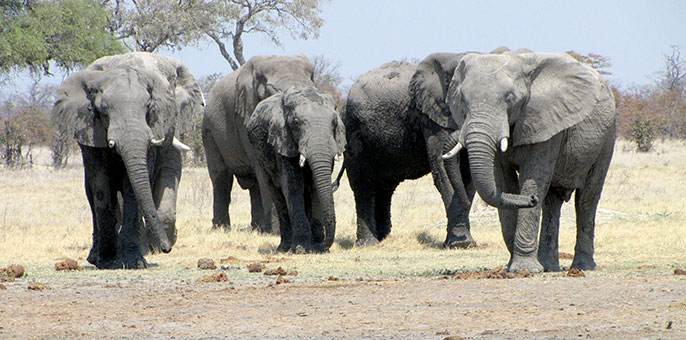“Many of the world’s largest herbivores — including several species of elephants, rhinoceroses, hippopotamuses, and gorillas — are in danger of becoming extinct. And if current trends continue, the loss of these animals would have drastic implications not only for the species themselves, but also for other animals and the environments and ecosystems in which they live, according to a new report by an international team of scientists.” Stuart Wolpert, in an article written for the University of California Los Angeles newsletter, posted May 14, 2015 with the title above, goes on to say:
The study, which was co-authored by Blaire Van Valkenburgh, a UCLA professor of ecology and evolutionary biology, was recently published in the open-access online journal Science Advances. One of the critical factors behind the disturbing trend is the tremendous financial incentive for poachers to sell animal parts for consumer goods and food. For example, rhinoceros horn is more valuable by weight than gold, diamonds, or cocaine, said William Ripple, the study’s lead author, a distinguished professor of ecology at Oregon State University’s College of Forestry. (Bloomberg News reported in 2014 that the price of rhino horn in Asia has approached $60,000 per pound.)
Said Van Valkenburgh: “Decades of conservation efforts are being reversed by the entrance of organized crime into the ivory and rhino horn markets.” The study also found that:
- Between 2002 and 2011, the number of forest elephants declined by 62 percent.
- From 2007 to 2013, the number of rhinoceroses poached skyrocketed from 13 per year to 1,004 per year.
- More than 100,000 elephants — one-fifth of the world’s wild savannah elephant population — were poached between 2010 and 2012.
“If this were to keep up, there would be very few or no savannah elephants in 10 years, and no African rhinos in 20 years,” Van Valkenburgh said.
Van Valkenburgh said even the researchers were surprised to find that 60 percent of species in the study — animals the size of reindeers and larger — are now considered to be threatened. “I certainly was taken aback by the data,” she said. “For some of the largest animals, such as elephants and rhinos, it is likely a matter of a few decades before they are extinct — and no more than 80 to 100 years for the rest of the large herbivores. Even though an individual elephant or rhino might persist in the wild somewhere in Africa, they will be functionally extinct in terms of their impact on the ecosystem.”
The scientists studied 74 species of wild herbivores that weigh an average of 220 pounds at adulthood. Their conclusion: “Without radical intervention, large herbivores (and many smaller ones) will continue to disappear from numerous regions with enormous ecological, social, and economic costs.”
The study notes that during the Pleistocene Epoch, which ended about 11,700 years ago, there were more than 40 species of herbivores in which adults weighed 2,200 pounds or more, but today there are only eight such species. The extinction of these “mega-herbivore” species has dramatically affected Earth’s ecosystems, the researchers write. For example, large herbivores are the primary source of food for predators and scavengers, and their trampling and consumption of plants influence the ways that vegetation grows. And humans, especially in developing regions, rely on large herbivores for food: It is estimated that 1 billion people rely on wild meat for subsistence.
For the species analyzed in the study, today’s two largest threats are hunting by humans and habitat change. Other key factors include growing human populations and increased competition with livestock. The authors write that the latter has been a particular threat in developing nations, where livestock production tripled between 1980 and 2002. As a result, one of their proposals for addressing the crisis is creating financial incentives for people who live near the animals’ habitats to protect the animals, so it becomes more lucrative to safeguard the animals than to poach them.
The scientists also emphasized the need for social marketing and environmental education campaigns as tools to drive down demand for animal products as food and consumer goods. (They noted that a social media campaign featuring retired NBA player Yao Ming appeared to help save shark populations by reducing demand for shark fin soup in his native China.)
“Large herbivores, and their associated ecological functions and services, have already largely been lost from much of the developed world,” the scientists write. “Now is the time to act boldly, because without radical changes in these trends, the extinctions that eliminated most of the world’s largest herbivores 10,000 to 50,000 years ago will only have been postponed for these last few remaining giants.”






